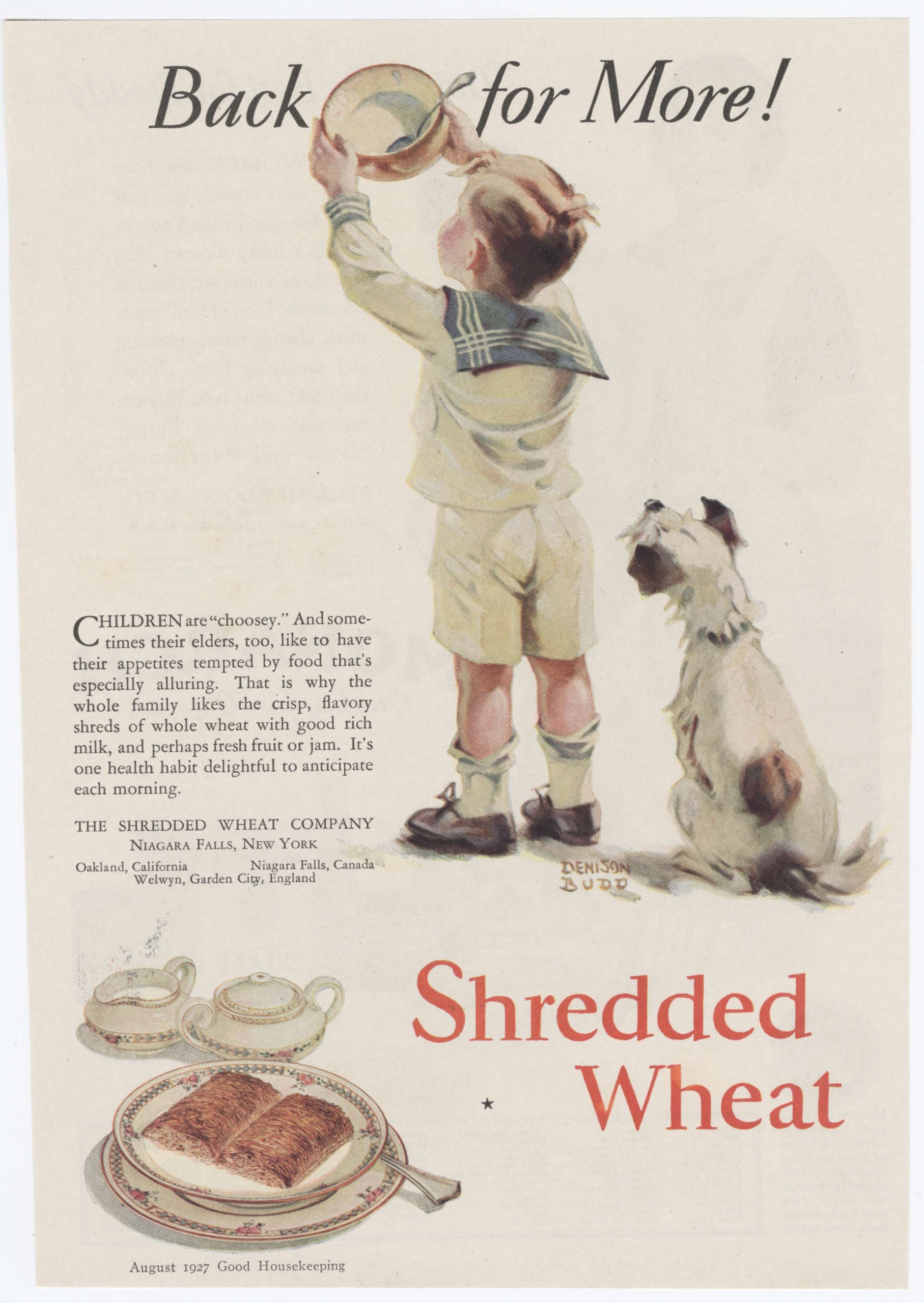Collections Hunters:
Uncovering the Museum’s Art and Archival Collections
We Eat First with Our Eyes
November 24, 2020 – Written By: Barbara Rundback
Food, an essential for man’s survival, is a common theme in art throughout the ages. Today, some epicureans consider food as an art form with its unique power to engage all the senses, not only vision. In the spirit of Thanksgiving, this blog looks at some of the mouthwatering imagery found in the Norman Rockwell Museum Collection.
A common artist’s commission was illustrating books, which included cookbooks. Prior to the 21st century, it was the philosophy that illustrations made the recipes less daunting to home cooks than highly, styled photographs. Here are some examples.
During the first half of the 20th century, leading periodicals were filled with food illustrations designed to entice our eyes. Many food and beverage companies marketed to the consumers’ idea of what was a meal or snack should look like, such as a bowl of cereal or a lunchtime sandwich. In these paintings, rosy-cheeked tykes happily enjoy their fare. The advertisements’ aim was to appeal to mothers wanting to give their children a quick, nutritious bite that they will actually eat.
Celebrations for bountiful harvests date back to ancient civilizations. In the United States, the first Thanksgiving was the feast shared between the Pilgrims and their Massasoit Indian neighbors in the fall of 1621. Early records indicate the meal featured wildfowl, venison, corn, and a variety of squashes. On today’s menu, the turkey is the centerpiece of the dining table; accompanied by mashed potatoes, stuffing, candied yams, cranberry sauce, and of course, pumpkin pie. We hope you will enjoy these illustrations from the Collection that capture the holiday.
To find out more about Norman Rockwell, Bascove, and Jacqui Morgan visit their profiles on the Museum’s Illustration History website (IllustrationHistory.org).
Food for Thought
Written By: Venus Van Ness
During this time of year as Thanksgiving approaches, food is top of mind for many of us. The Norman Rockwell Museum Archives is fortunate to have an extensive collection of vintage and historic food-related advertisements, which give an interesting insight into the evolution of food and beverage advertising during the early part of the 20th century. Major brands like Quaker Oats, Kraft, Heinz, Pillsbury, and Campbell’s Soup rose to prominence during this period, with well-funded national campaigns that increased the visibility of their products over that of local competitors.
The iconic red and white Campbell’s Soup can, originally white and gold, was inspired by a football uniform. The Treasurer of Campbell’s, Herberton Williams attended the annual Cornell-Penn football game in 1897 and was so impressed by the look of Cornell’s carnelian red and white uniforms that he proposed that the labels be changed to match. The switch was a huge success and the brand became even more prominent after the creation of the “Campbell’s Kids,” used in ad campaigns beginning in 1904. The Kids were meant to convey a sense of wholesomeness and physical well-being associated with eating Campbell’s Soup. They were so well-liked that a hugely popular line of dolls was created and sold in stores like Montgomery Ward and Sears.
Another notable example, Jell-O began its printed ad campaign in 1904 in Ladies’ Home Journal. The printed ads were combined with a parallel campaign involving the distribution of recipe booklets. In some years, as many as 15 million booklets were given out to the public. Their popularity was enhanced by the use of cover illustrations from noted artists such as Rose O’Neill, Maxfield Parrish, Coles Phillips, and Norman Rockwell.
Most print advertisements from the 1910’s and continuing into the 1920’s and 1930’s, tended to include large, dense blocks of narrative text that either extolled the virtues of the product or, alternatively, attempted to appeal to mothers from either a health or value perspective. The most successful ads, however, were able to combine the extensive text with bold colors and imagery, resulting in long lasting, much-loved products that still exist today.



![Fred Eng (1917-1995) [Food Illustrations], n.d.](https://www.nrm.org/wp2016/wp-content/uploads/2020/11/NRM.2012.4.89.800x800-1.jpeg)



![Jacqui Morgan (1939-2013) [Thanksgiving dinner table], n.d.](https://www.nrm.org/wp2016/wp-content/uploads/2020/11/NRM.2014.03.061.800x800.jpeg)




